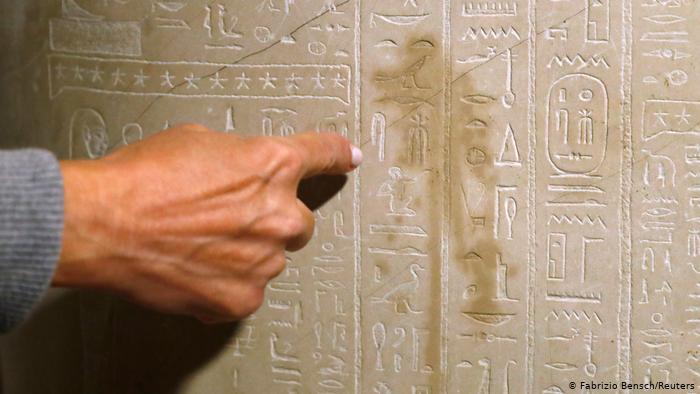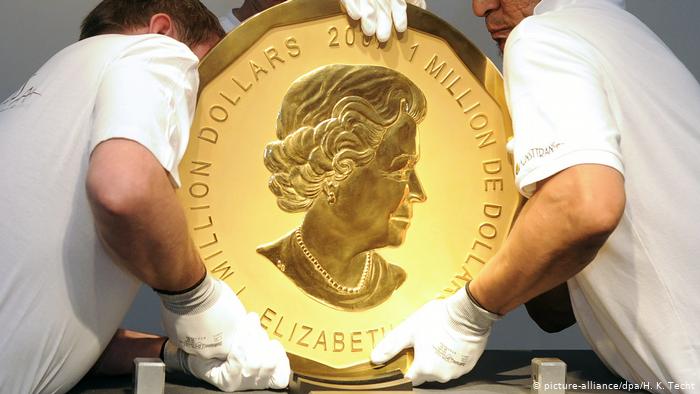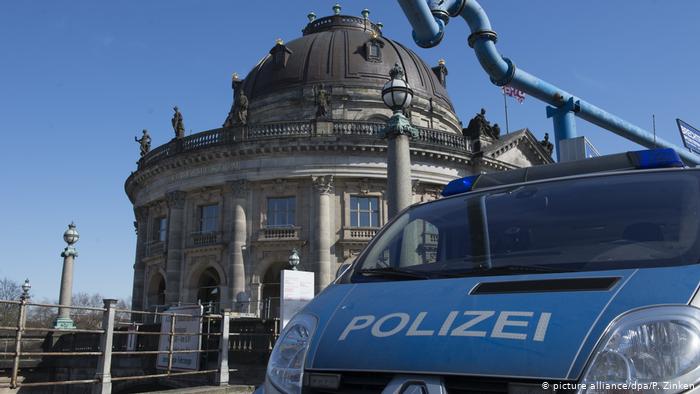An attack on artefacts on Berlin's Museum Island has shocked museums worldwide. How can the protection of such artworks be improved, and how many more safety measures do they need?
Theft and vandalism are not new phenomena that museums have to deal with, but when they do occur, museum managers face a balancing act between protecting the art on display while keeping it accessible and available to the public.
There is a reason why the recent incident at the popular Berlin museums were not immediately made public — the ongoing investigation, authorities said.
More than two weeks ago, vandals splashed 68 exhibits with an oily liquid at Neues Museum, Pergamon Museum and Alte Nationalgalerie. The investigators are mystified as to who might be behind the attacks, and what their motivations might have been. So are the museum operators.
The liquid left clearly visible stains on the exhibition objects, particularly on a number of Egyptian sarcophagi and stone sculptures. Restorers are working hard to remove them, which is turning out to be easier on wood than on stone. According to reports, however, the extent of the damage could be contained.

Why did it take so long to react?
Witnesses report that on the day of the attack, a lot of museum staff were on duty. Cameras recorded the events in the museum rooms. All the same, no one noticed the damage until later that evening.
Just a few weeks ago, Germany's Minister of State for Culture, Monika Grütters, had labeled the safety situation in German museums as inadequate. At a security conference of the German Museum Association at the end of September 2020, she demanded the situation be "thoroughly investigated and questioned."
The art treasures in the museums mirror our history and culture, she highlighted, saying: "They form our identity."
Threats old and new
Their material and even more importantly their immaterial value can hardly be quantified, she argued, adding that museums across the country would have to master a difficult "balancing act between protection and openness."
The security situation in the museums has in fact changed, according to David Vuillaume, Managing Director of the German Museum Association: "The threat is more complex," he told DW.
In the past, fire and water posed the greatest danger to artefacts displayed in museums, but today, there were also hidden threats in transportation, careless visitors, burglaries and vandalism.
Whatever it is, he said, "you can learn something from each instance."
Three-minute heist
A museum director who would know all about such lessons learned is Marcus Reuter, director of the Rheinisches Landesmuseum Trier — one of Germany's most important archaeological museums.
His collection ranges from prehistory to Roman times, covers the Middle Ages and the Baroque era, and includes the Trierer Goldmünzenschatz (Trier Gold Hoard), the largest preserved Roman gold treasure in the world. A year ago, would-be thieves forcefully broke into the well-protected building, and were "in and out again in three minutes," Reuter told DW.
The robbery, however, failed. "Our security concept worked," the museum director said, adding how it was important to make access to the museum treasures more difficult by keeping would-be thieves busy for as long as possible.
The museum was lucky that time but Reuter revisited the security concept that was in place up to that point, added new police recommendations, and sent the museum's sponsors a list of requests to update the safety measures. They responded by granting him a six-figure sum for renovations and new security technology.
No guarantees
Whether funds are made available for additional security measures often depends in most cases on politicians in the municipalities, states or the federal government. It is also a matter of negotiation, said David Vuillaume.
Public museums prefer to invest their fund in mounting exhibitions that will draw in the public — instead of boosting their security measures which nobody takes notice of, says Alke Dohrmann, an expert who has helped develop security guidelines for museums on behalf of the Conference of National Cultural Institutions. Many museums however, she said, would very much like to provide more security — but can they?
"No museum can prove that costly security measures protect the works of art," David Vuillaume of the Museum Association said. But if no precautions were taken, that might backfire in the event of a burglary, theft or damage to the artwork. At that point, security becomes a major issue.

The situation is different however in private institutions and museums: their operators — foundations, individuals or collectors — have to insure their holdings, and that is an expensive undertaking. This is in contrast to public museums which do not have their own individual insurance policies.
Their insurance is covered by the respective provider, for instance Germany’s state-run Prussian Cultural Heritage Foundation in the case of the act of vandalism at the Berlin museums.
Museum thefts can cause incredible damage to a collection, Dohrmann added. Some artworks — like the giant gold coin stolen from the Berlin Bode Museum — can simply not be replaced. The gold value of the "Big Maple Leaf" was €3.75 million ($4.43 million).
In general, however, the security situation in German museums is not overtly precarious, Dohrmann said, but she warned that of course, "something can always happen."
Latest Stories
-
Six Ukrainian soldiers killed in Russian strike on training exercise
5 minutes -
Three traders arrested for resisting decongestion exercise at Kwame Nkrumah Circle
6 minutes -
AGLOTLED launches “1 Child, 1 Book a Week” initiative to promote reading among pupils
19 minutes -
Ajuma shares powerful message with debut single ‘Suro Nipa’
22 minutes -
Decongestion Exercise Day 2: AMA clears illegal structures at Circle Neoplan
26 minutes -
Buipe: Prez Mahama revamps PBC Shea Factory to actualise 24-Hour Economy Policy
31 minutes -
Nations FC coach Kassim Mingle credits second-half tactical shift for win over Legon Cities
37 minutes -
Some people are not made for fame; they are made for purpose – Ayisi
50 minutes -
Mahama undermined his own ethics code by accepting car gifts – Transparency International Ghana
1 hour -
National Security Operatives, Bureau of National Investigations and Kaakaamotobi: Is the legitimacy of certain security and intelligence institutions under further threat? (Part I)
1 hour -
Cedi’s outlook remains favourable – BoG Governor assures
1 hour -
University Senior Staff declare indefinite nationwide strike over unfulfilled agreement
1 hour -
UK-born Ghanaian caught smuggling 22kg cannabis from Canada spared jail
1 hour -
Mahama’s gift-giving code lacks clarity and encourages double standards – Transparency Int’l Ghana
1 hour -
Dreams FC: Shy Winfred Dormon remains tightlipped on interest in head coach role
2 hours

